Everyday Sourdough Bread
This recipe is very easy to double (or triple). I usually double it. The rising times will vary according to how cold and moist the air is in your house. In the hot summer, my bread can rise within just hours, so I start in the morning. But most of the year, I need to start the night before. If it’s really cold in the house, I try to seek warm places to put my dough to rise, and then expect it to take longer. For the second rise, I include instructions on how to help your bread rise quickly by using your oven and hot water.1 cup of sourdough starter
1/2 cup of water
1 1/2 teaspoons sea salt
2 tablespoons to 1/4 cup of honey (depending on how sweet you want it)
2 tablespoons melted coconut oil or olive oil
About 3 to 4 1/2 cups of spelt, hard whole wheat flour (freshly ground is preferable).Step One:
Bosch Mixer Instructions: (The Bosch works better if you at least double the recipe)For timing sake, start in the evening.Place the mixing bowl on the bosch machine, and put the dough hook on.
Place your sourdough starter, water, salt, honey, and oil in the mixer bowl. Mix it just a tiny bit to combine.Add three cups of flour and start the machine on low. As it mixes, continue to add flour until the dough starts to clean the sides of the bowl and forms a ball. Stop the machine and feel it. Does it still feel really sticky? Add some more flour until it feels moist, but not sticky.On low speed, knead for 6-8 more minutes.Take out of the bowl and place on a clean, floured counter. If the dough is a bit sticky still, you can hand knead a little more flour in.Hand Kneading MethodCombine your sourdough starter, water, salt, honey, and oil in large bowl. Whisk to combine.With a wooden spoon, start stirring in your flour. Continue to add flour until the dough is so stiff, it’s too hard to stir.On a clean, well floured surface, place your wet sticky dough, and start kneading in flour. To knead, flip the top half of the dough on top of the bottom half, push this folded lump of dough with heels of one or both of your hands. Turn the dough a quarter, and repeat. Remember to keep flouring the board and the dough, as needed. You may want to gently oil your hands to prevent sticking. Continue this process until the dough no longer feels sticky, but don’t add too much flour in, so as to make it feel dry. Total kneading time should be about ten minutes.Step Two: The First RisingPlace your dough in a lightly oiled bowl, cover tightly and allow to rise overnight. This step generally takes about 12 hours. If the weather is really warm and humid, it could take as little as three (I only experience this in the hot summer). The dough should double in size.Step Three: The Shaping and Second RisingTo shape your dough into a loaf. Press your ball of dough into a rough rectangle.Fold one half of the dough to meet about the middle of your rectangle. Make sure to press down the dough, so that there isn’t any air bubbles.Do the same with the other side of the dough, slightly overlapping the other fold.Starting at the top of your folded dough, start gently rolling it toward you, pressing to seal the dough with the heel of your hand as you go along.Continue until you reach the bottom of your dough. Using the tips of your fingers, you can pinch together any loose seems. It should look something like this when done.Place in very well greased bread pans (I use palm or coconut oil to grease mine).The Second Rise:While you can do your second rise at room temperature. I prefer the following method because it takes a much shorter amount of time, is a more effective way to get your bread to rise, and also prevents the bread from become too sour. If you do decide to rise at room temperature, it should take between 6-12 hours, in a 65 to 70 degree house.Oven method. Place your bread pans in the oven, with a towel covering them. Place a jelly roll pan, or a casserole dish on the rack below. Heat up some water to the boiling point, and carefully pour into the pan, and close the oven door. This will create a warm, moist environment for your bread to rise. Check the oven an hour or two later, and add more hot water. It should take 2-3 hours for your bread to rise.When I was making these particular loaves of bread, in two hours, I found my bread like this.Slightly over risen! (The breaks on top of the loaves show where it has risen too much). So keep on eye on it. It may rise faster than you think.To Bake:Bake at 375 for about 45 to 55 minutes. Place in the lower third of your oven so that the top doesn’t brown to much. When you remove the loaf from the pan (you may need to run a knife around the edge before removing), it should sound hollow when tapped on the bottom. Cool in cooling racks and enjoy.
This post is part of Frugal Friday.

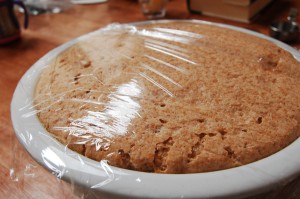
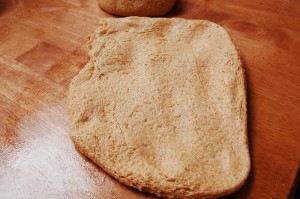
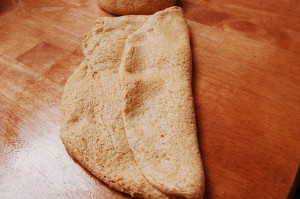
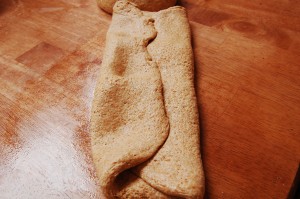
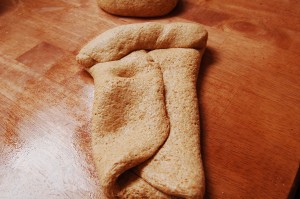
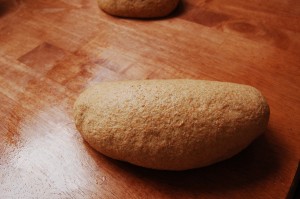
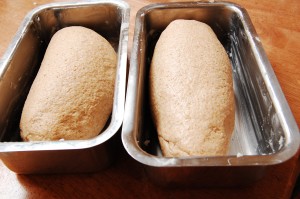
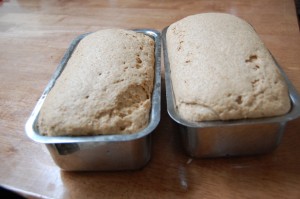
No comments:
Post a Comment